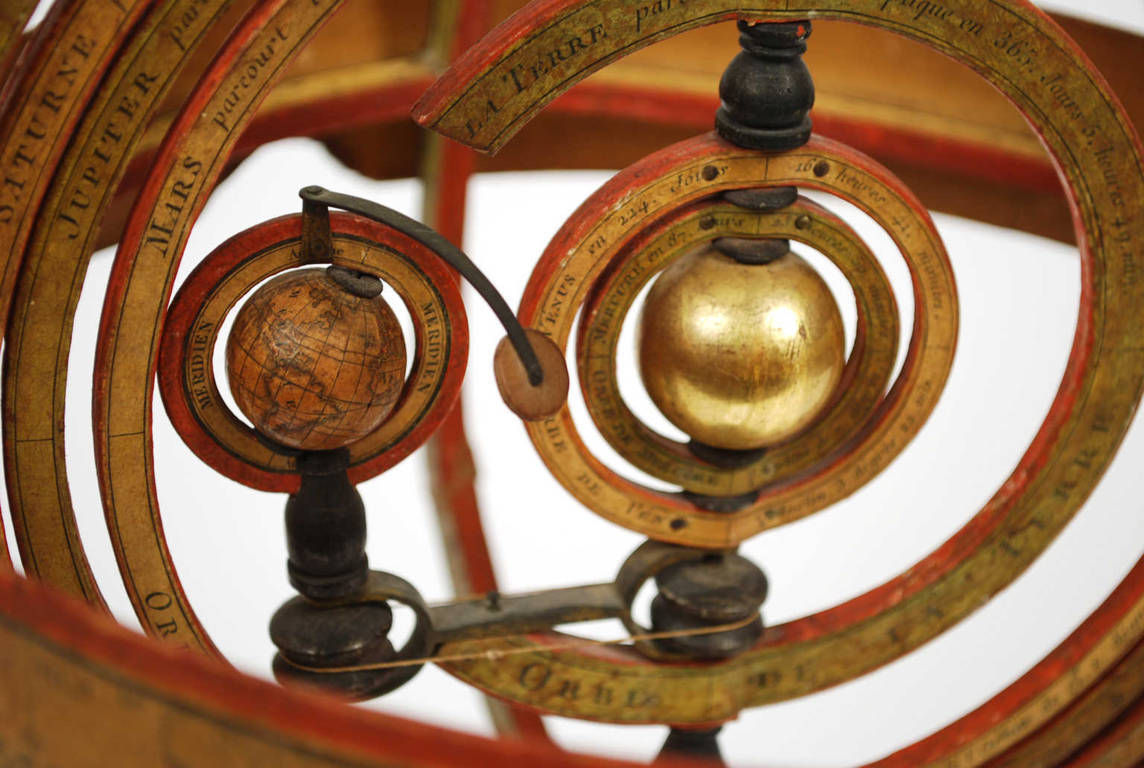1752933783Code 8190 Terrestrial GlobeTerrestrial globe published in the second half of the 19th century by French geographer Joseph Forest; in addition to the territorial map, it depicts ocean currents and the main trade routes of the period. Papier-mâché and plaster sphere covered with lithographed and watercolored paper segments, turned and ebonized wooden base, complete with engraved brass meridian semicircle.
Good condition, cleaned and restored. Dimensions: 32 x 60 – 12.6 x 23.6 cm.
Joseph Forest (1865-1942), a French geographer and cartographer, founded his publishing house in 1886 on Rue de Buci in Paris, producing terrestrial and celestial globes, school maps, and armillary spheres, primarily for educational purposes.
In 1889, he became the official supplier to schools for the Ministry of Education.
His diverse production included table globes, some on turned and ebonized wooden bases, floor globes, and innovative globes, such as those with mechanically rotating bases.
The first recorded terrestrial globe is the one attributed by Strabo, historian and geographer, to the Greek Crates of Mallo (c. 150 BC). The first globes, constructed in the early 16th century under the impetus of great geographical explorations, immediately began to be used for educational purposes in princely courts, monasteries, and colleges; the globe later began to conquer universities and high schools. In the 18th century, Didier Robert de Vaugondy, the official geographer of King Louis XV of France, drawing on his experience in globe construction,
expanded the article "Globe" in the Encyclopédie by detailing the distinction between a celestial globe (which represents the concave surface of the sky with its constellations) and a terrestrial globe (which represents the surface of the Earth with its seas, islands, rivers, cities, etc.) and the techniques for making them: two papier-mâché hemispheres pressed and shaped on or inside a hemispherical mold, dried and strengthened on the inside with a wooden board, then glued and covered with a thin layer of plaster. The globe's meridians, usually twelve, were glued onto the meridians. These were made of paper previously printed by copperplate engraving and colored, each covering 30 degrees of longitude.
It was with the nineteenth century, marked by widespread trade, circulation, and the introduction of compulsory education, that the desire to explore distant lands increased, making the old method of globe construction inadequate. Printed globes from engraved plates were no longer sufficient, and the only real resource became lithography, which made it possible to print and promptly update maps that, with the growth of geographical discoveries in various countries, became increasingly obsolete.



























